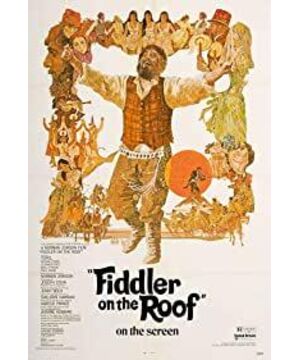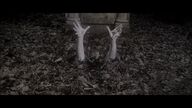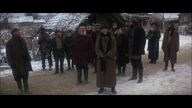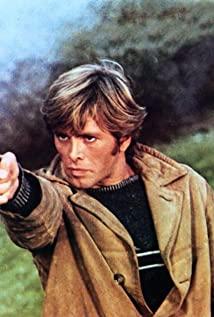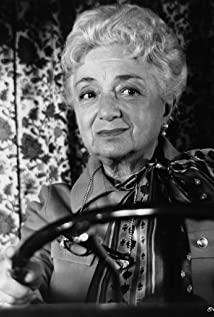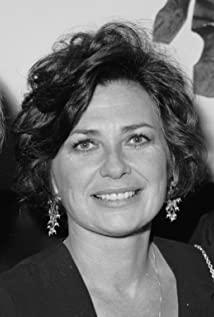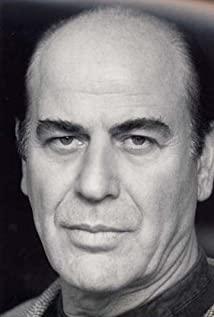1. Conflict between Tradition and Transformation
At the beginning of the film, Tey, the milkman, introduced the "great tradition" of this remote Jewish gathering village, and the crowd sang a song of Tradition. This tradition can be seen everywhere in life, from sabbath to rabbi, and the most obvious is the matchmaker of children’s marriage. Parents’ orders and matchmakers’ words are the compass of every child’s marriage. They are required to obey, even though they have their own privately. Everyone's favorite candidate. However, this tradition was broken one by one by Tey's three daughters, and each time it was outrageous. The eldest daughter liked the poor tailor who grew up together, but the rich butcher took the lead in sending a matchmaker to propose marriage. Tey readily agreed, but found that her daughter liked taylor rather than butcher. At the begging of her daughter-in-law, Tey Had to agree. The second daughter fell in love with the revolutionary young Perchik, who was taken in by Tey. The passionate Perchik was a man who could sit down. After getting engaged with her second daughter, she went away to propagate the revolution, and was finally arrested and exiled. Tey had to watch with pain. The second daughter also went to Siberia to meet him. The third daughter is even more exaggerated. She fell in love with Fyedka, a young foreign teacher. No matter how tolerant, Tey could not betray his beliefs. He only denied this daughter, even though he also gave blessings in the end. It can be said that the whole film is the process of breaking the tradition. However, the film also emphasizes that some traditions cannot be changed. Tey also said that "some things cannot be changed". A certain balance must be maintained between tradition and change ( As many other commenters have said). I think the violinist on the roof that appears in the key scenes in the film is an important symbol of tradition, and Tey’s lines also have many hints.
2. Ethnic conflict
That is, the conflict between the Jewish people who believe in Judaism and the non-Jewish people who believe in Orthodox Church. This was reflected in the beginning. After introducing his own traditions, the "police" and non-Jewish governors appeared in the film immediately, but the conflict was not obvious at this time. Tey said that they had theirs. We live ours without violating each other. But this kind of conflict is reflected in the "fighting dance" in the tavern. Although the two sides reached a certain reconciliation and danced together in their doubts, they also blessed the marriage of Tey's daughter. Then at the wedding, Russian soldiers suddenly came to burn and do miscellaneous tasks, which explained the intensification of ethnic conflicts until the Jews were driven out of the village. One of the most moving characters created in this conflict should be the Russian military officer. He liked Tey’s humorous character and maintained a good relationship with him. He also sympathized with these hardworking and humorous Jews, but was intimidated by his superiors. Do something against your will. Several close-ups of his expressions all showed the pain in the heart of this kind man.
3. Religious conflicts
are not too important, but they are obvious. Apart from the fact that Tey could not accept the marriage of his three daughters for religious reasons, the most memorable scene was what Tey’s wife Golde felt when she saw the portrait of Jesus Christ outside her door when she went to a Christian church. The glare and panic, showing the sensitivity and fear of the people under the tense religious conflict.
4.
The irony of the political conflict to the czar was revealed in the rabbi’s jokes from the very beginning. Someone asked the rabbi if he could give the czar a blessing. The rabbi said, "May the Lord keep him away from us." There are also several hints of dissatisfaction with the czarist rule in the film. The most obvious one is the revolutionary young Perchik. He opposed the rule of the Tsar and advocated the independence of the working class and the people. He should be a communist. Later, in his speech, the scene where the crowd was hacked with bayonets by the Tsar's army was extremely acrimoniously showing the political tension at that time, and the blood of the revolutionaries when they were violently suppressed by the Tsar.
Five, family conflict
This is the most common conflict in life, and it is concentrated in the husband and wife. Tey's nagging to his wife is almost unbearable, and the wife often complains about her husband being different from herself, always making her own way. But this conflict melts in the warmth of love. What is impressive is that Tey asks his wife if he loves himself? The wife said that after 25 years of marriage, we are in the same bed every day and live together. Love has become the cornerstone of the relationship between the two, and no one can do without. Although they are married without love, because they are probably the traditional matchmaker's words, the first meeting is at the wedding, 25 years of married life has bred the greatest love, they understand each other and face the family Mutual understanding and support for the changes are moving. The dream that Tey made up to persuade his wife to agree to the marriage between the eldest daughter and the poor tailor can't help but make people smile, admiring the wisdom of family marriage.
In short, conflicts are everywhere. He makes people entangled and pained in each incident, and is resolved in people's love, tolerance and wisdom, but the conflict itself will never disappear.
View more about Fiddler on the Roof reviews


